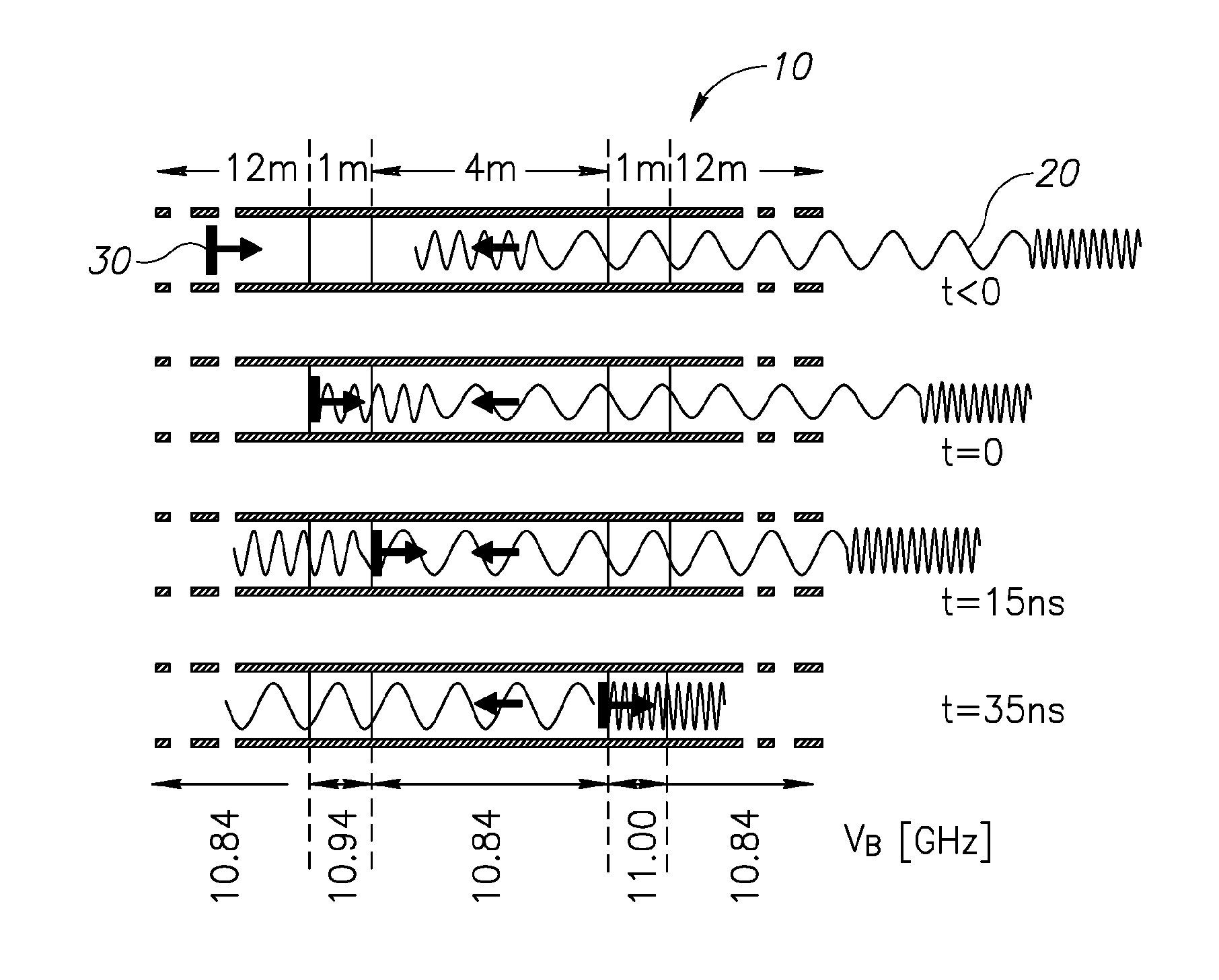Distributed and dynamical brillouin sensing in optical fibers
a dynamic and optical fiber technology, applied in the direction of converting sensor output, reflectingometers using simulated back-scatter, testing fibre optic/optical waveguide devices, etc., can solve the problem of a fair amount of slow procedur
- Summary
- Abstract
- Description
- Claims
- Application Information
AI Technical Summary
Benefits of technology
Problems solved by technology
Method used
Image
Examples
Embodiment Construction
[0022]The present invention, in embodiments thereof, suggests using a probe signal with variable frequency tailored to match average characteristics of an optical fiber under test. Under average strain / temperature conditions, the Brillouin gain spectrum of a uniform fiber is constant along the entire length of the fiber under test. For a given pump frequency, the optical frequency of the counter-propagating probe is then chosen to coincide with one of the −3 dB points of the ˜30 MHz-wide Lorentzian Brillouin gain spectrum. Alternatively, any other point along the slope may be chosen, possibly but not necessarily the center of the slope. It is understood that in the following description, any reference to a −3 dB point should be interpreted as a point along the slope.
[0023]In the presence of strain changes, the BGS shifts at approximately 50 MHz / 1000 μS, and the fixed frequency probe wave will now experience less or more Brillouin gain, depending of the direction of the BGS shift. Ea...
PUM
| Property | Measurement | Unit |
|---|---|---|
| length | aaaaa | aaaaa |
| length | aaaaa | aaaaa |
| frequencies | aaaaa | aaaaa |
Abstract
Description
Claims
Application Information
 Login to View More
Login to View More - R&D
- Intellectual Property
- Life Sciences
- Materials
- Tech Scout
- Unparalleled Data Quality
- Higher Quality Content
- 60% Fewer Hallucinations
Browse by: Latest US Patents, China's latest patents, Technical Efficacy Thesaurus, Application Domain, Technology Topic, Popular Technical Reports.
© 2025 PatSnap. All rights reserved.Legal|Privacy policy|Modern Slavery Act Transparency Statement|Sitemap|About US| Contact US: help@patsnap.com



